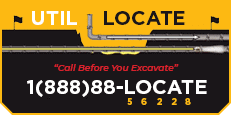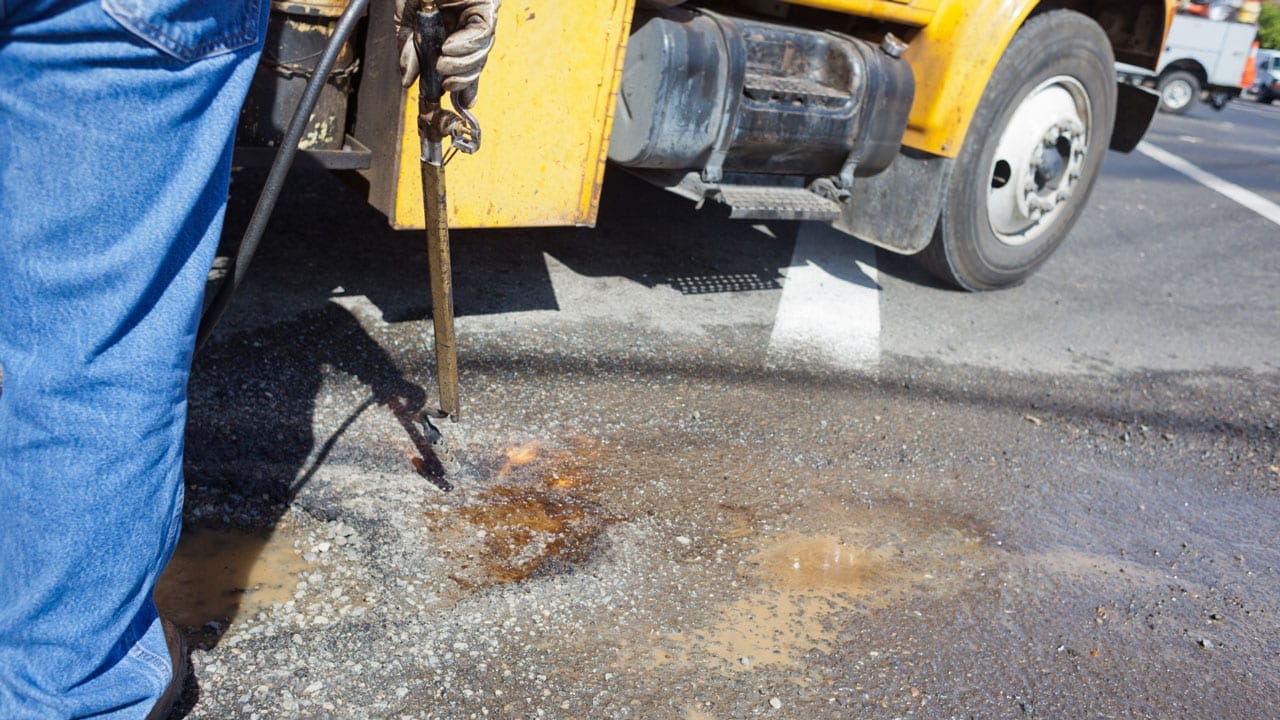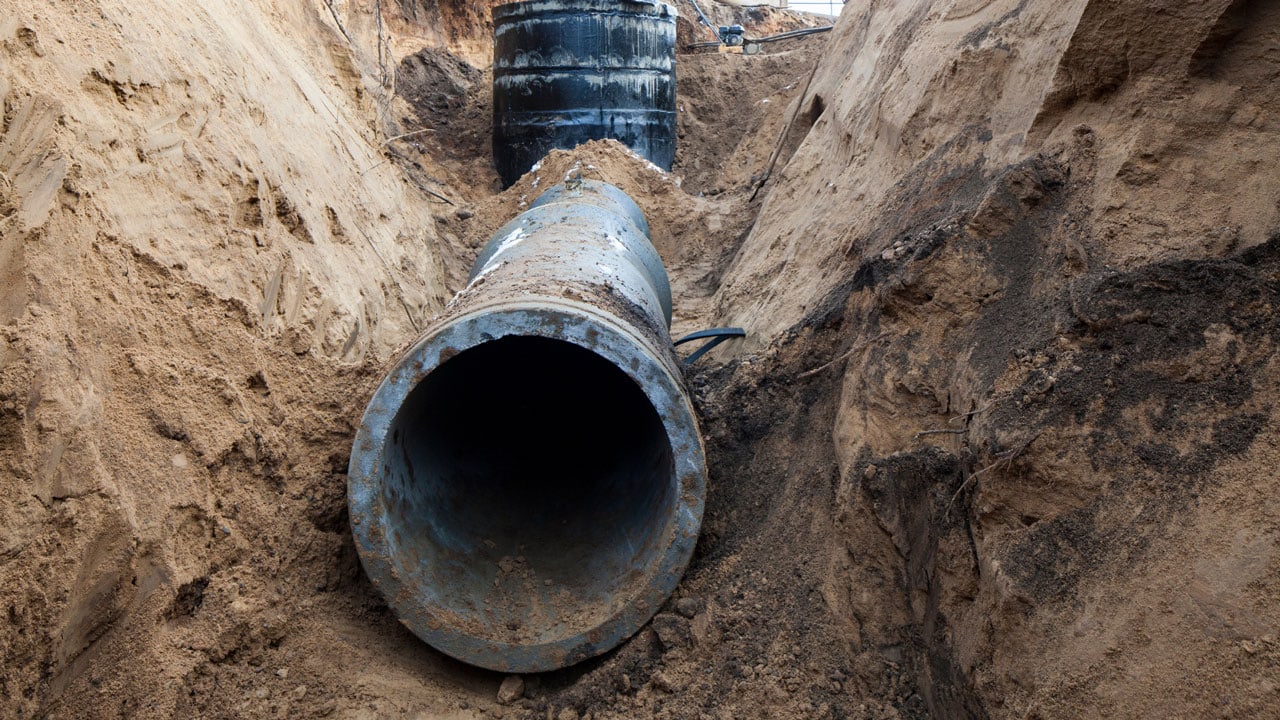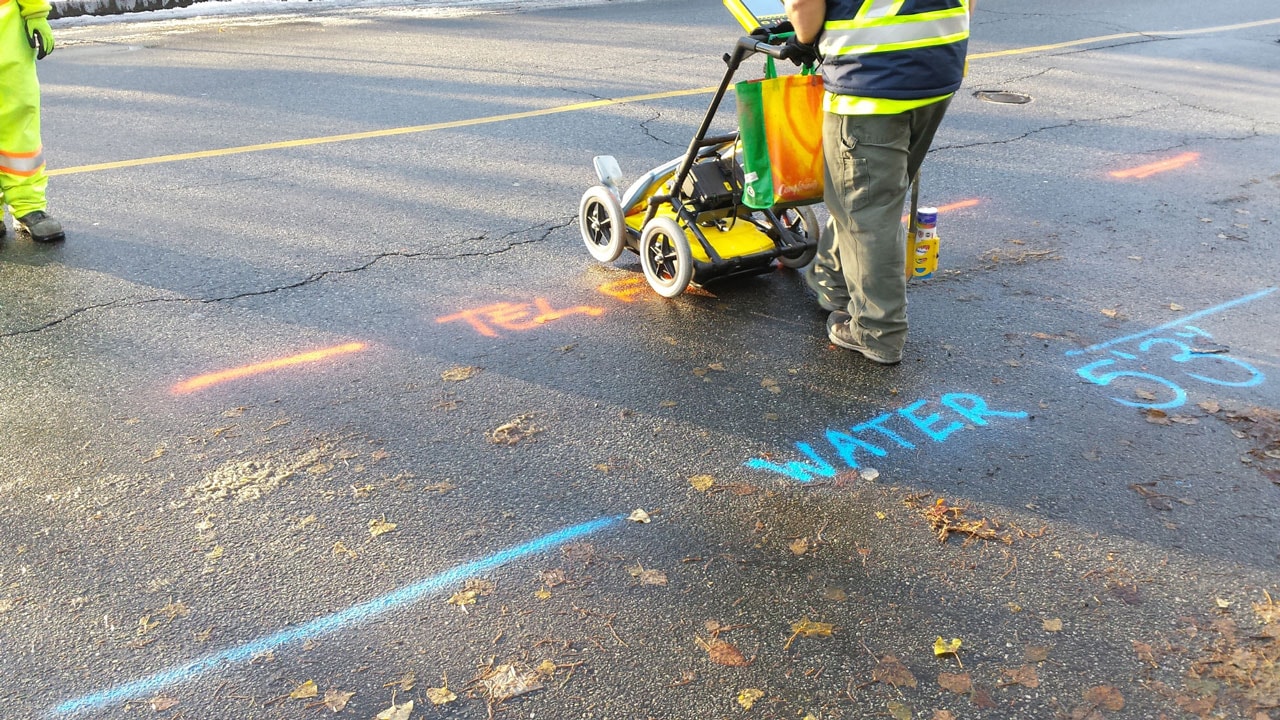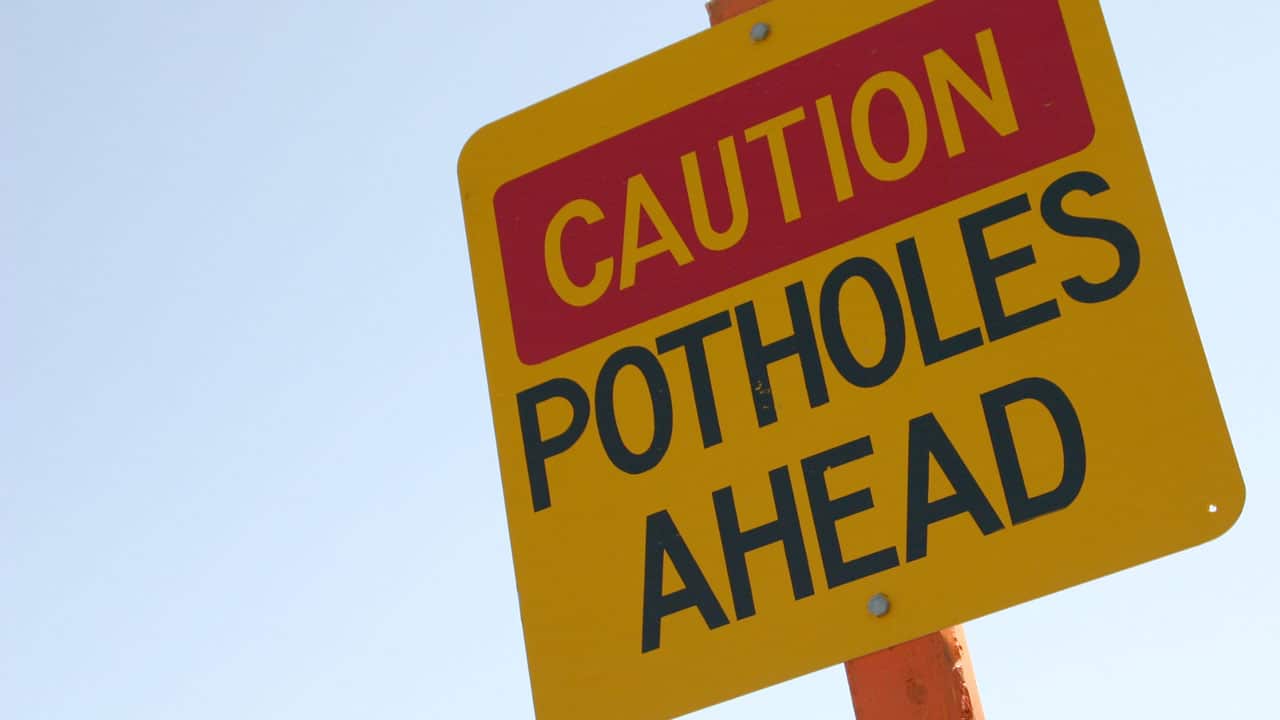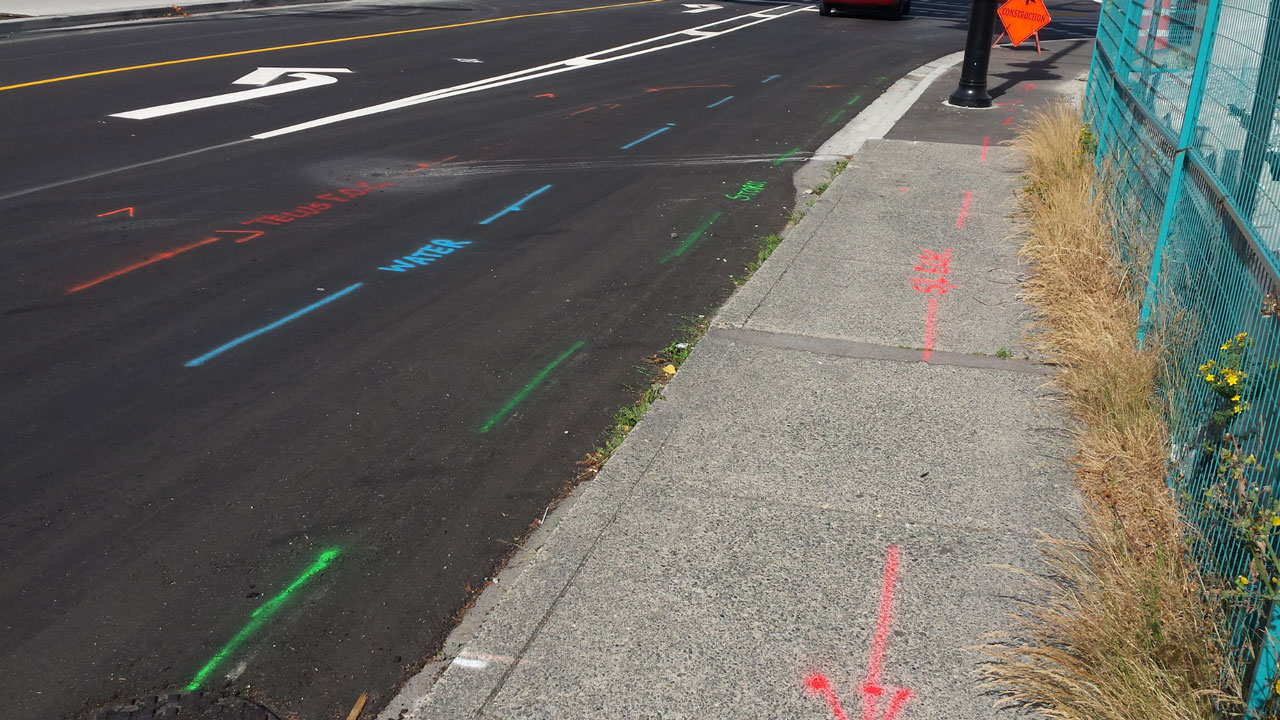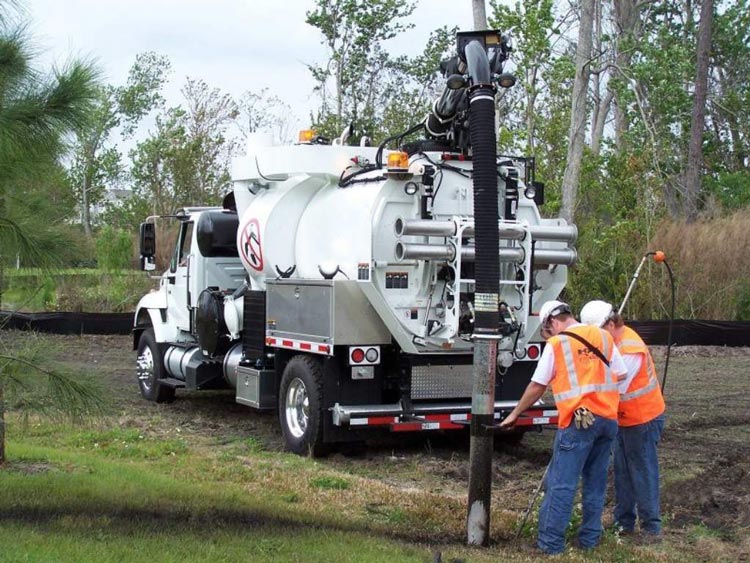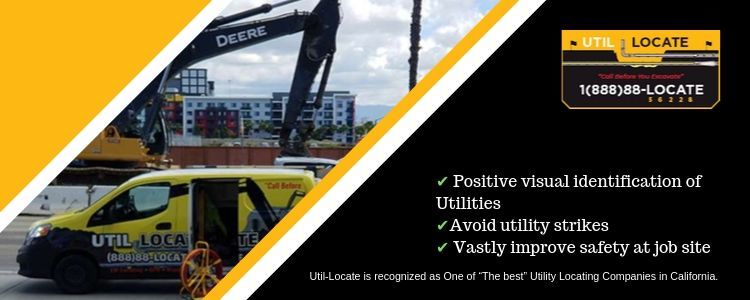Potholing is a crucial process in excavation projects that involves creating a small, precise hole to locate and identify the exact position of underground utilities, such as fiber optic lines and utility poles. By using specialized equipment like vacuum excavation, potholing services are able to accurately identify and map the horizontal position and depth of these utilities, reducing the risk of damage and service interruptions during the construction process.
This blog post will cover the basics of potholing construction and its importance in excavation projects, including the potholing process, methods of utility location, and the role of subsurface utility engineering in ensuring that underground infrastructure is not damaged during construction.
What is Potholing and Why is it Important in Excavation Projects?
Potholing is a process of creating a small, precise hole to expose and identify the location of underground utilities. This process is important in excavation projects because it allows construction crews to locate and identify the exact location of underground utility lines, fiber optic lines, and other infrastructure, reducing the risk of damage and service interruptions during the construction process.
Potholing services use specialized equipment like vacuum excavation to accurately locate and map the horizontal position and depth of underground utilities. By using these advanced techniques, construction crews can avoid the risk of damaging underground infrastructure during the excavation process, which can be costly and time-consuming to repair.
In addition, potholing helps prevent service interruptions by ensuring that construction crews are aware of the exact locations of underground utilities. This knowledge allows them to plan the construction process more effectively and avoid any potential issues that may arise during excavation.
This is an essential process in excavation projects, and its importance cannot be overstated in preventing underground utility damage and service interruptions.
The Benefits of Vacuum Excavation for Locating Underground Utilities
Vacuum excavation is a non-destructive excavation method that is commonly used to locate underground utilities. This process involves the use of specialized equipment that utilizes compressed air or water to loosen the soil and a vacuum system to remove the loosened soil and debris.
One of the main benefits of vacuum excavation is its precision. The use of compressed air or water allows for a more controlled excavation, making it easier to locate underground utilities without causing damage to them.
Furthermore, vacuum excavation is a safer alternative to traditional excavation methods, as it reduces the risk of injury to construction crews and damage to underground infrastructure.
The Role of Subsurface Utility Engineering in the Potholing Process
Subsurface Utility Engineering (SUE) plays a critical role in the potholing process. SUE involves using advanced technologies to map and locate underground utilities and other infrastructure to a high degree of accuracy. By utilizing this technology, potholing services can provide construction crews with precise information about the location and depth of underground utilities, reducing the risk of damage during the excavation process.
SUE technologies include electromagnetic locators, ground-penetrating radar, and other geophysical instruments. These tools can provide construction crews with detailed information about the location and type of underground utility lines, such as water, gas, or electricity.
By incorporating SUE into the potholing process, construction crews can make informed decisions about the location and depth of underground utilities, reducing the risk of service interruptions and damage to underground infrastructure.
Trust Util-Locate to Handle Your Potholing Construction and Excavation Projects
When it comes to potholing construction and excavation projects, it’s essential to work with a company that you can trust. Util-Locate has over 20 years of experience providing quality potholing services and underground utility locating services to a wide range of industries.
Our team of experienced professionals utilizes state-of-the-art equipment and technology to accurately and safely locate underground utilities, reducing the risk of damage and service interruptions during the excavation process. We understand the importance of timely and efficient project completion, and we work closely with our clients to ensure their needs are met.
Trust Util-Locate to handle your utility potholing construction and excavation projects. To learn more about our services and how we can help with your next project, contact us at 888-885-6228 at Util-Locate today!
